
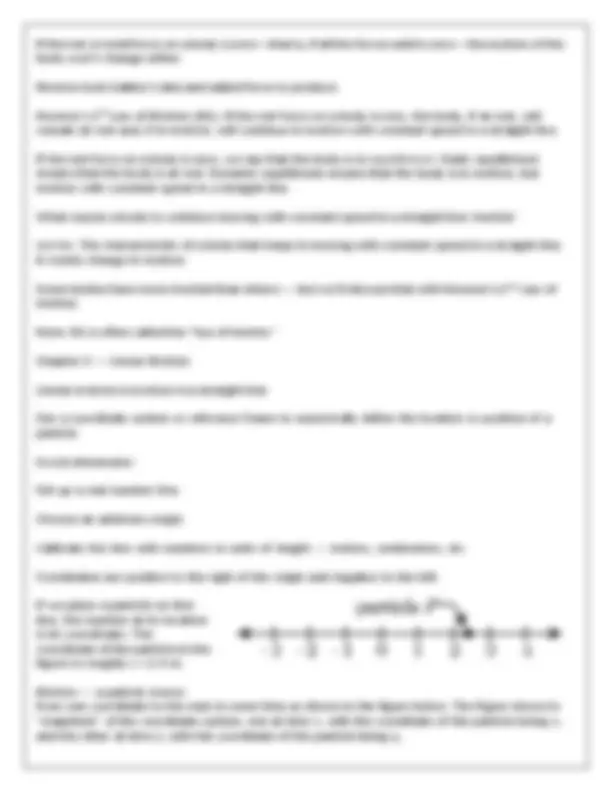
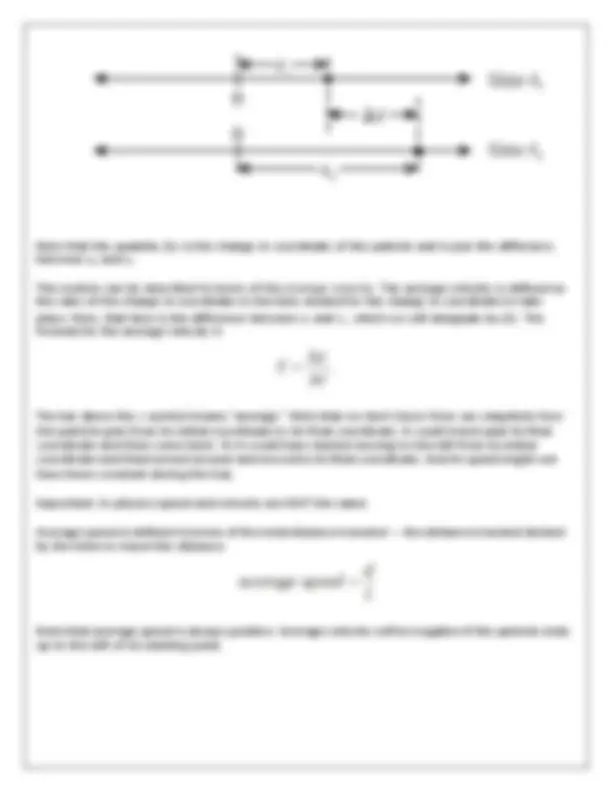
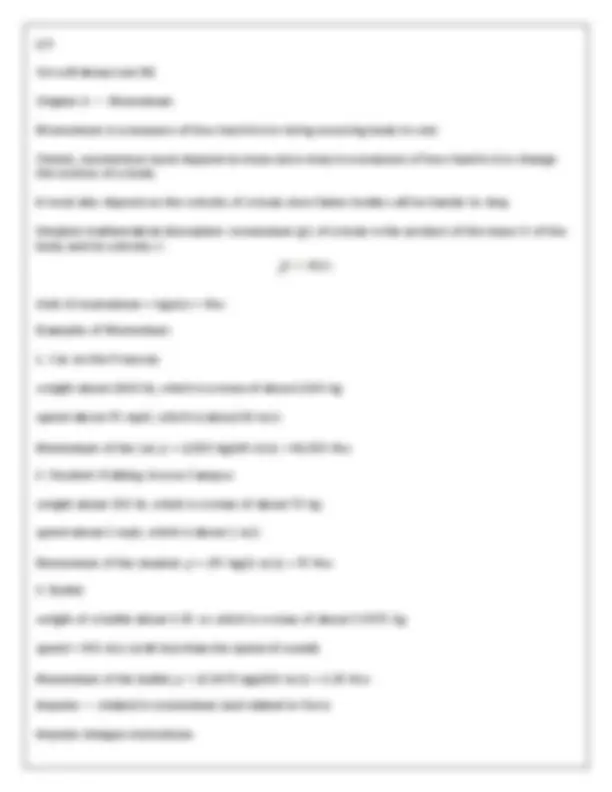

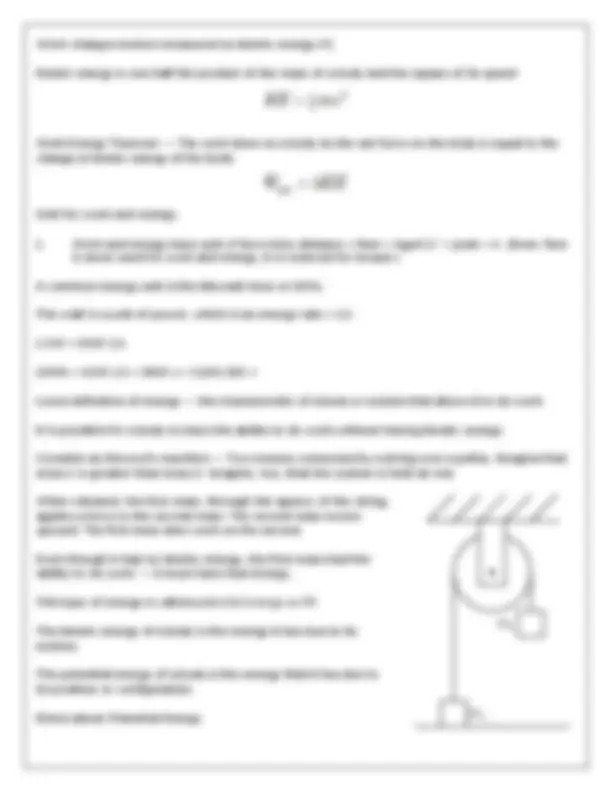
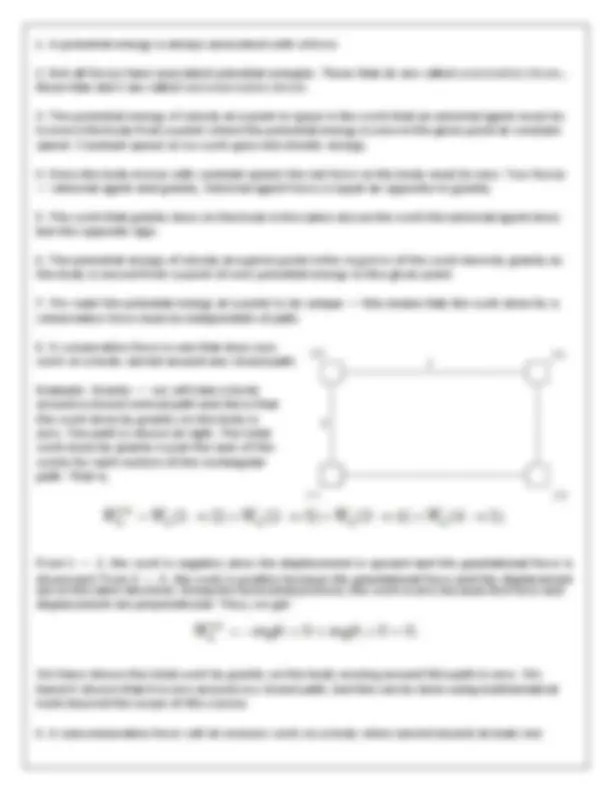
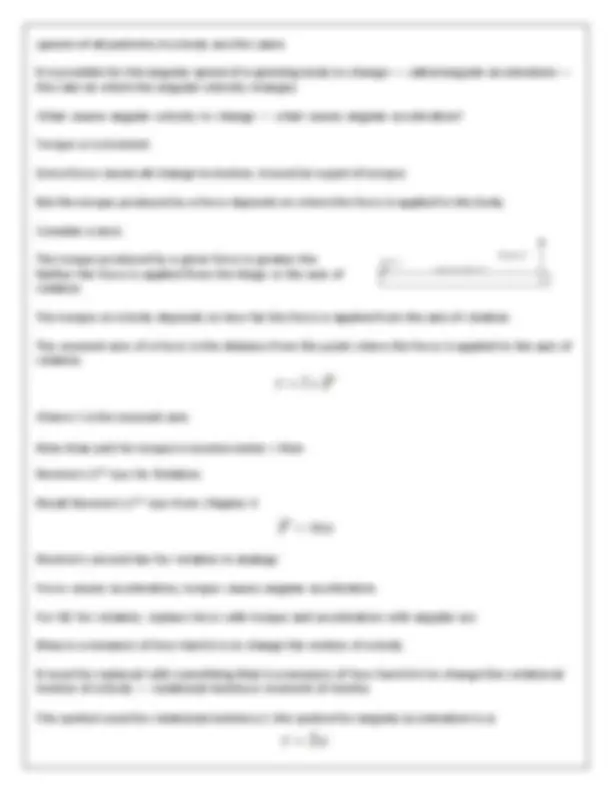
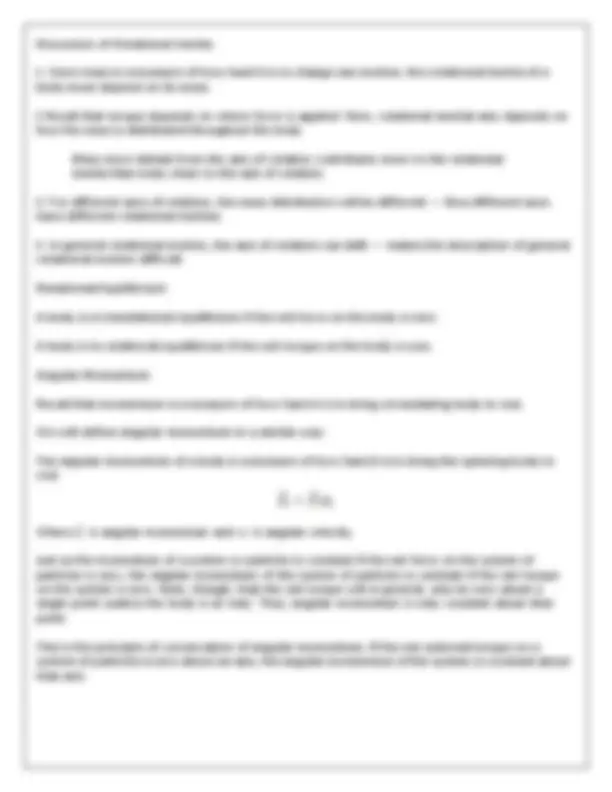
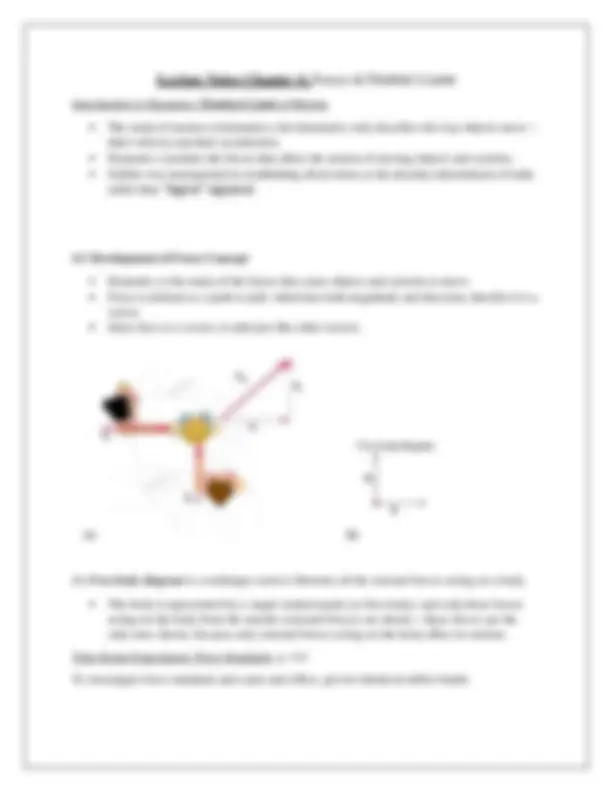
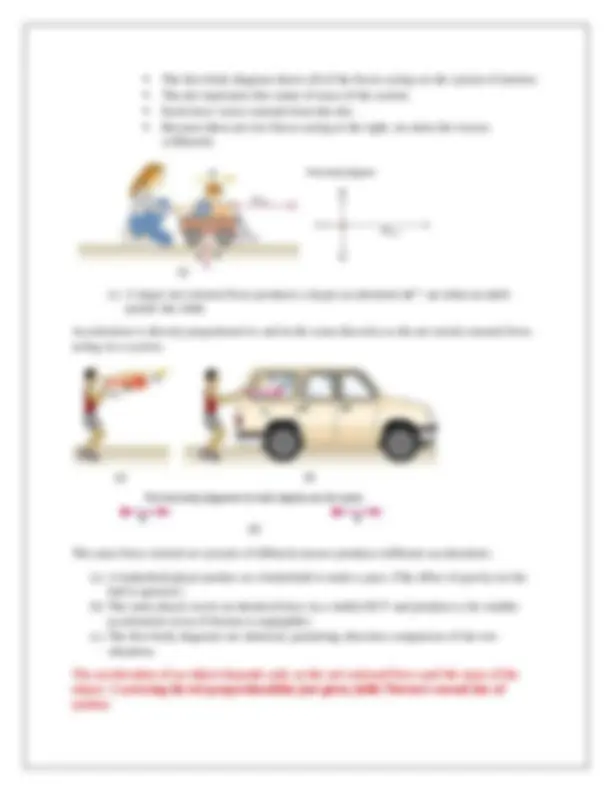
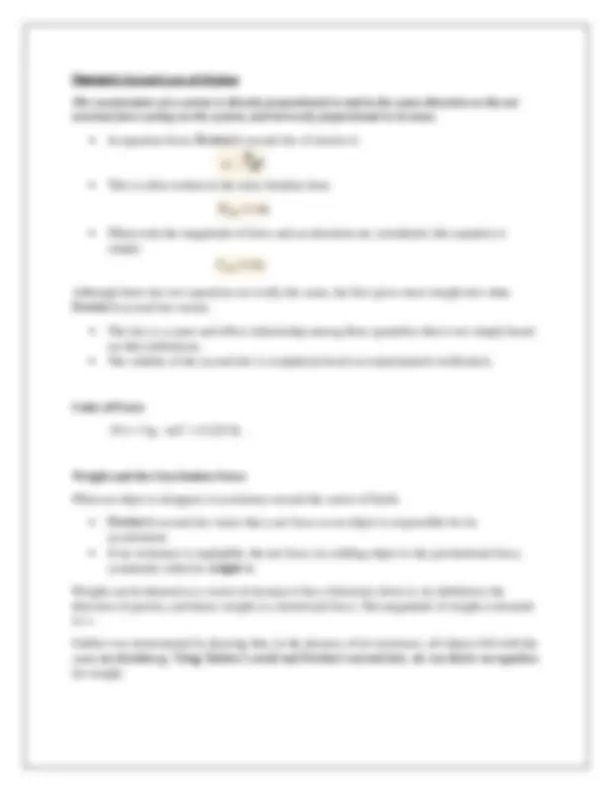
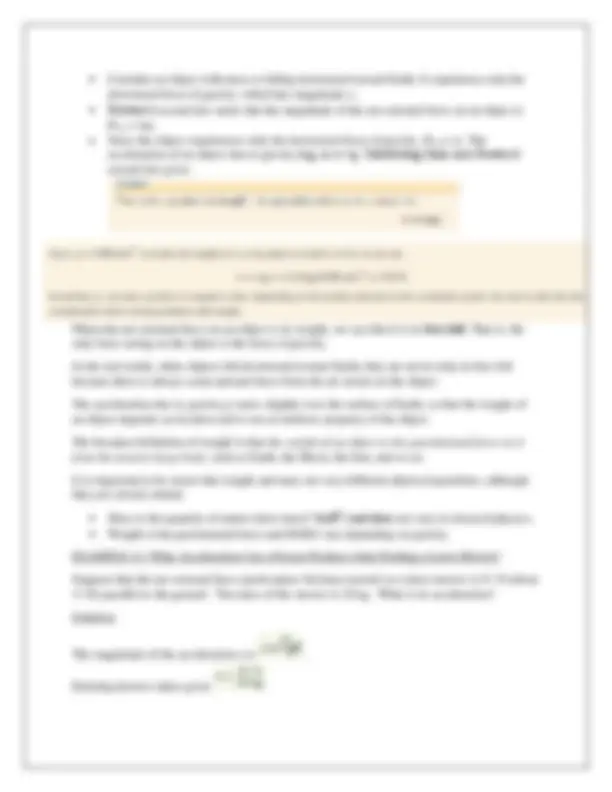


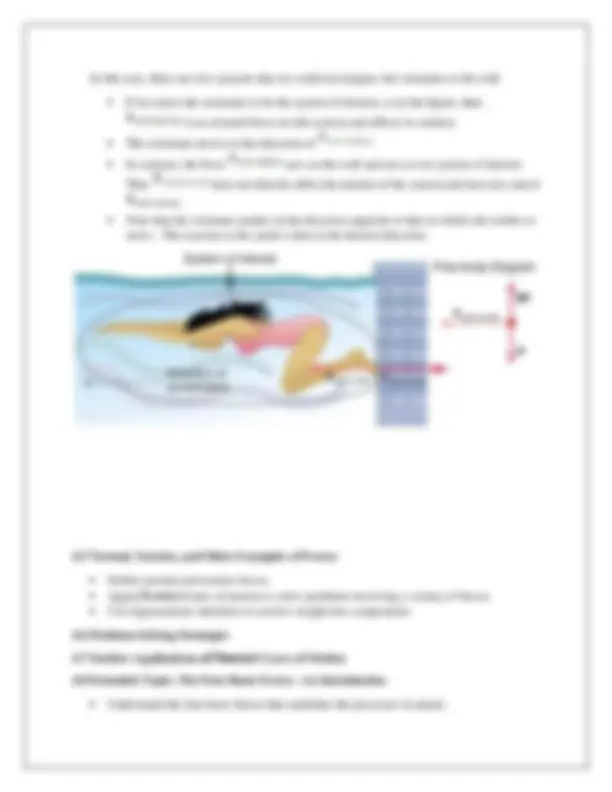
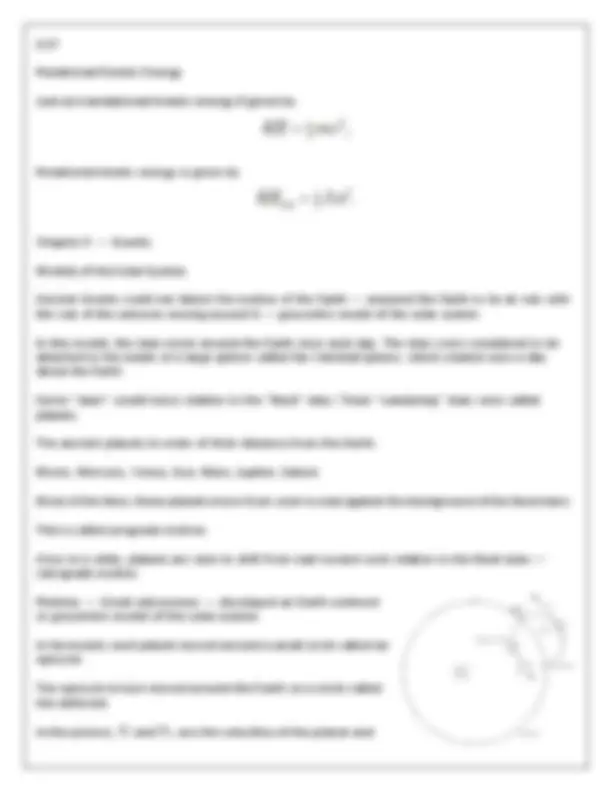
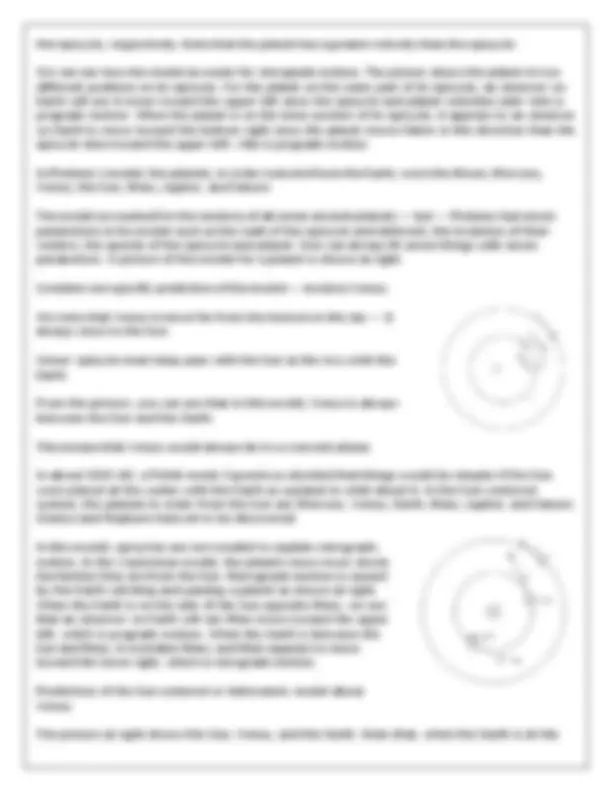
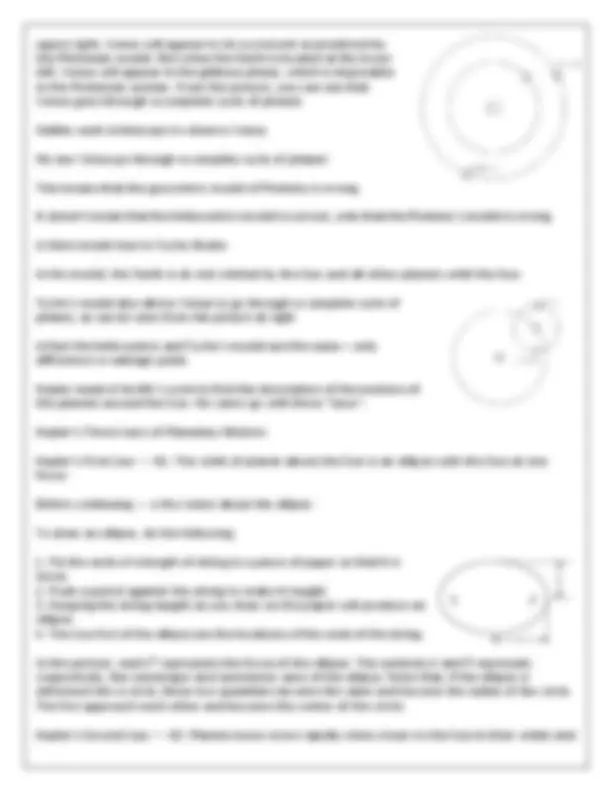
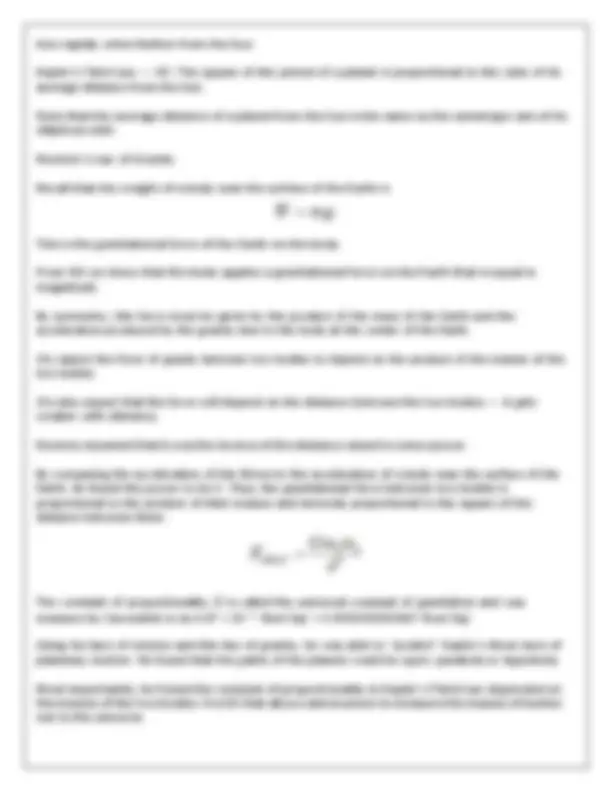
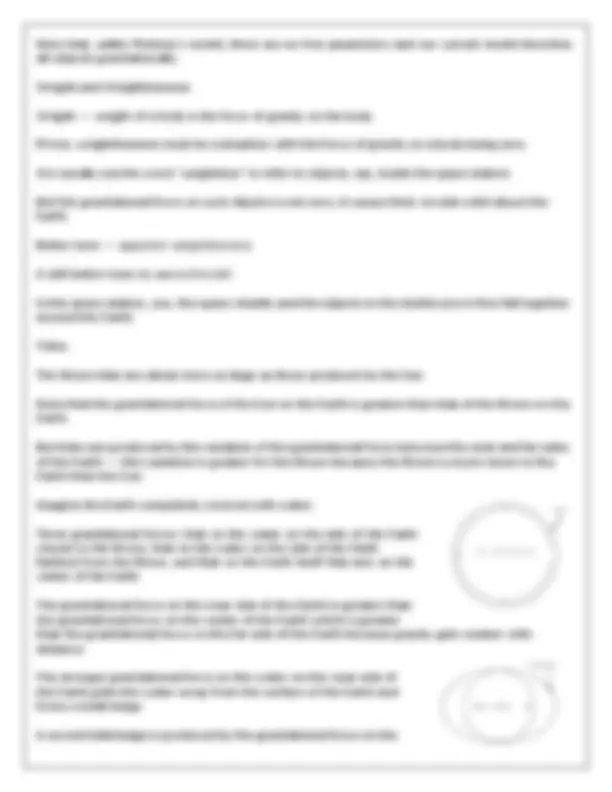
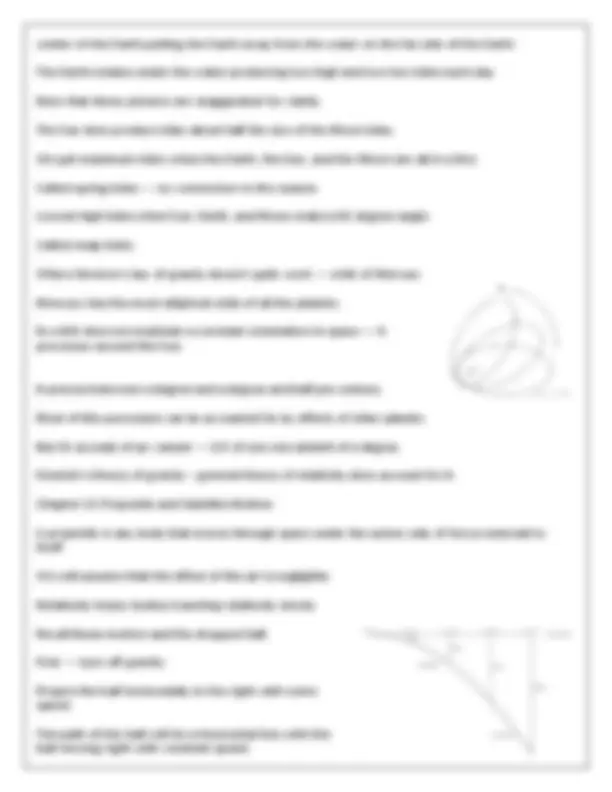
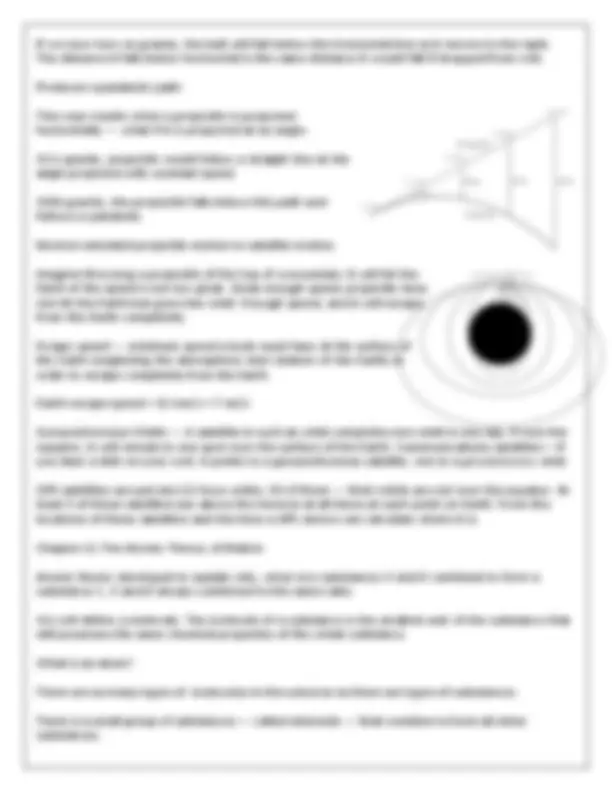
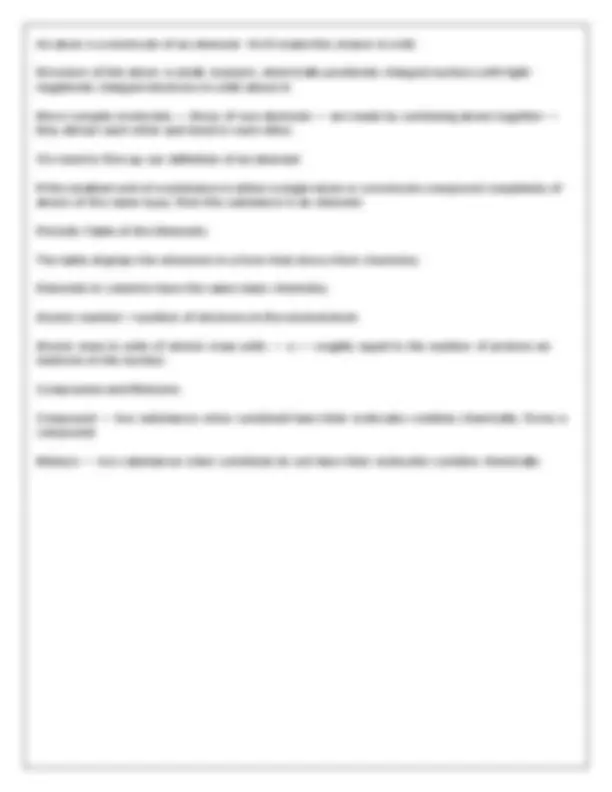
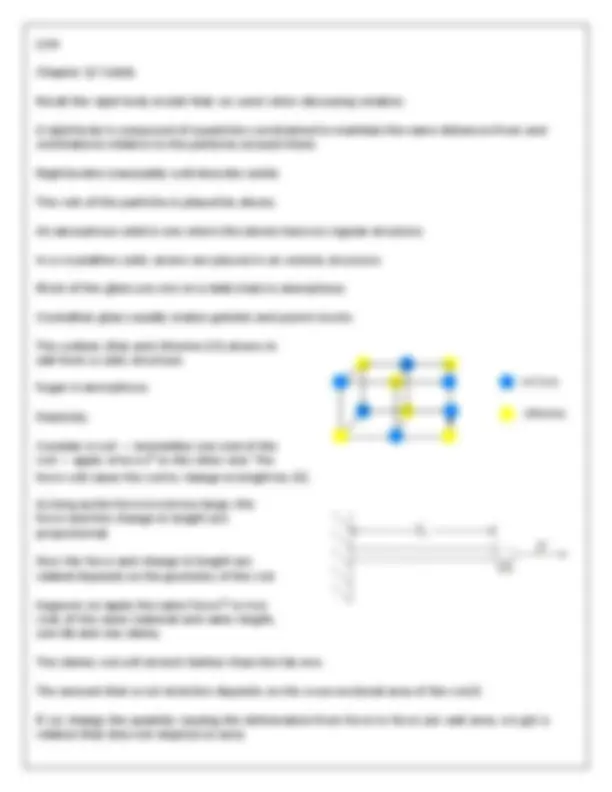
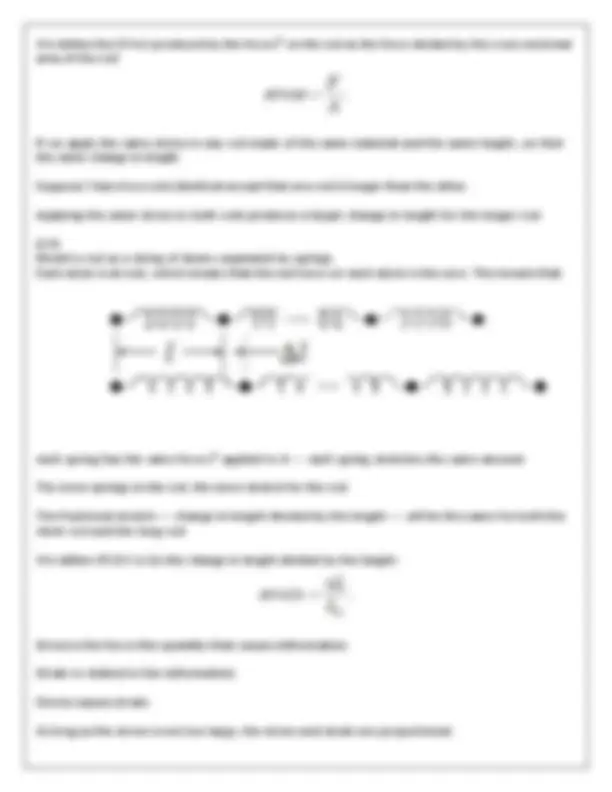
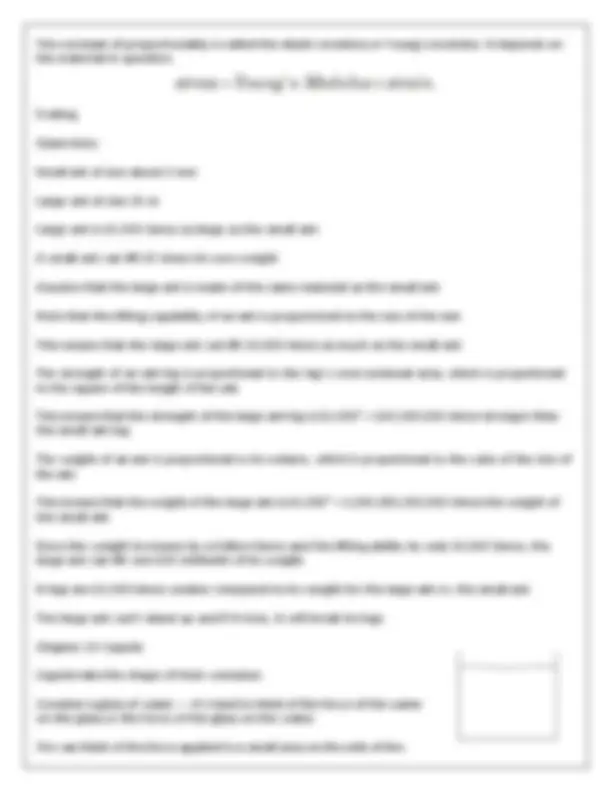
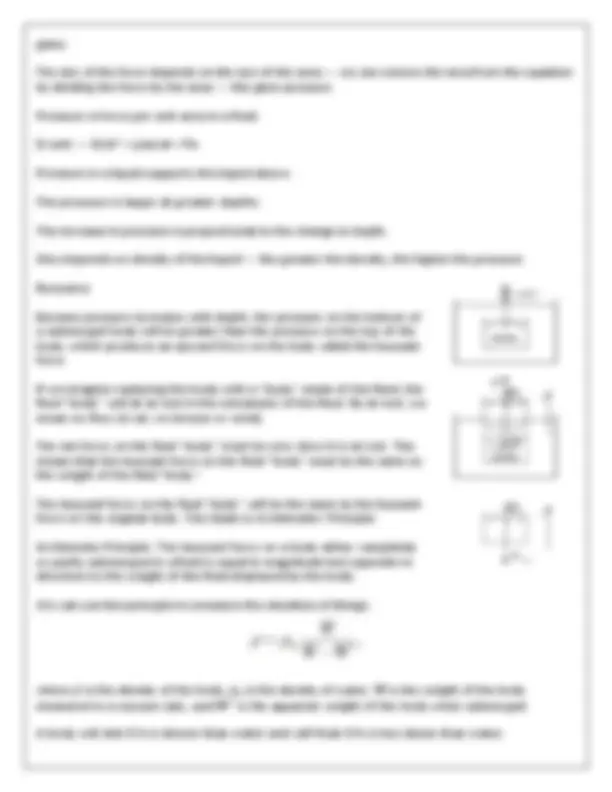
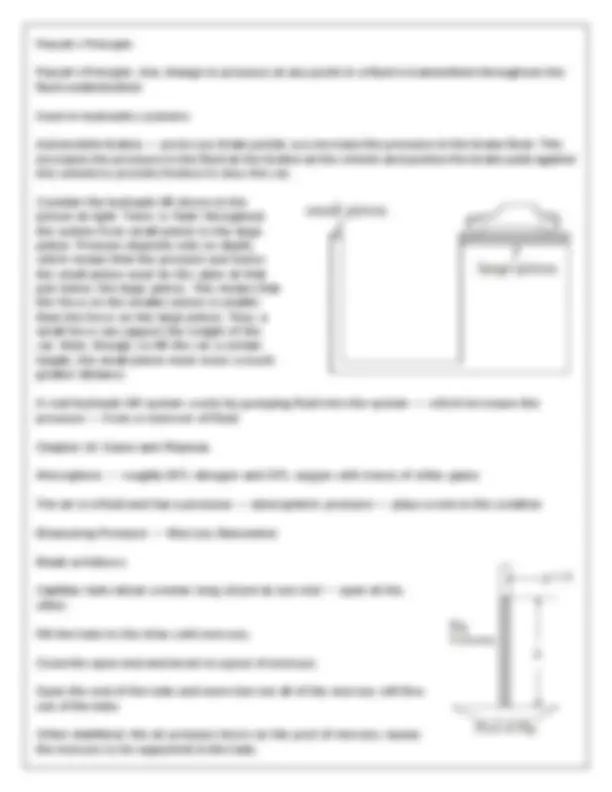
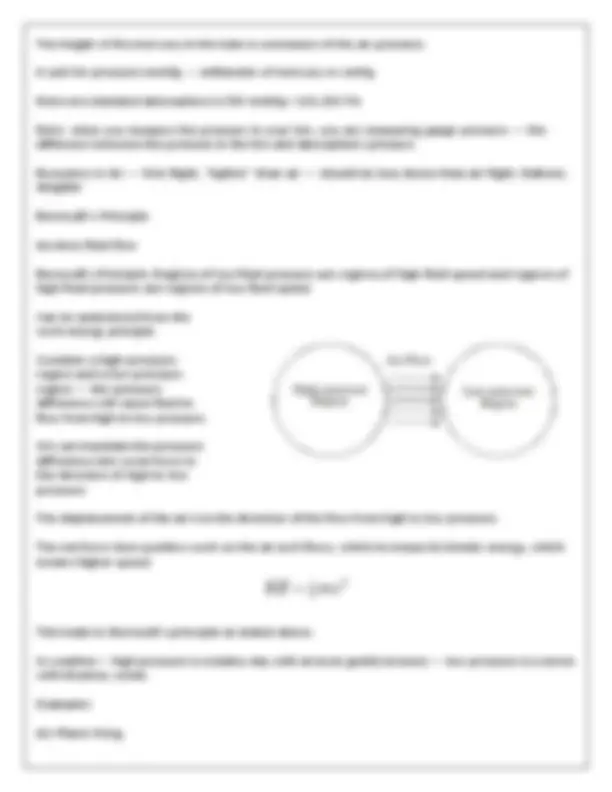
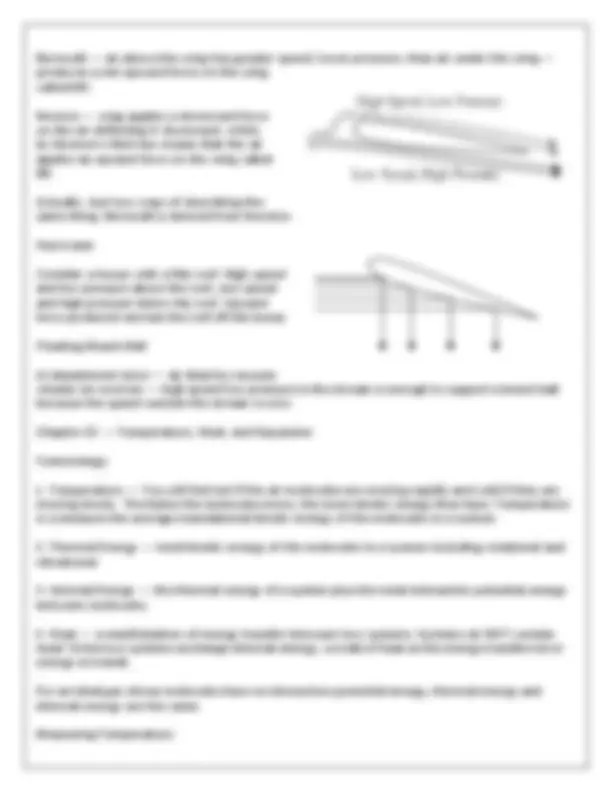
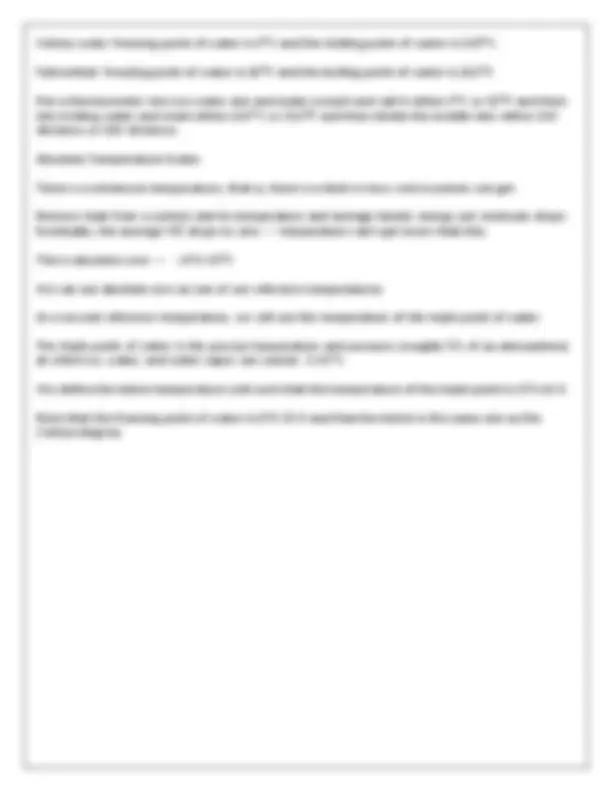

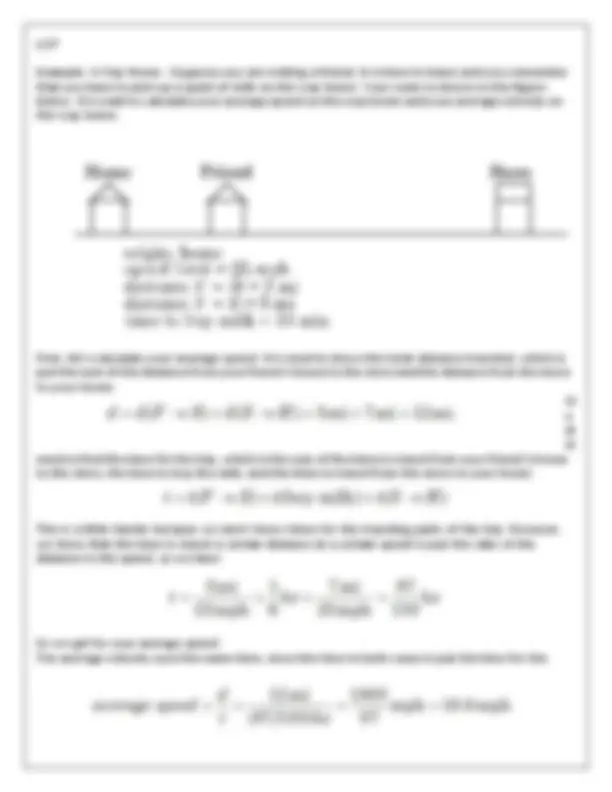
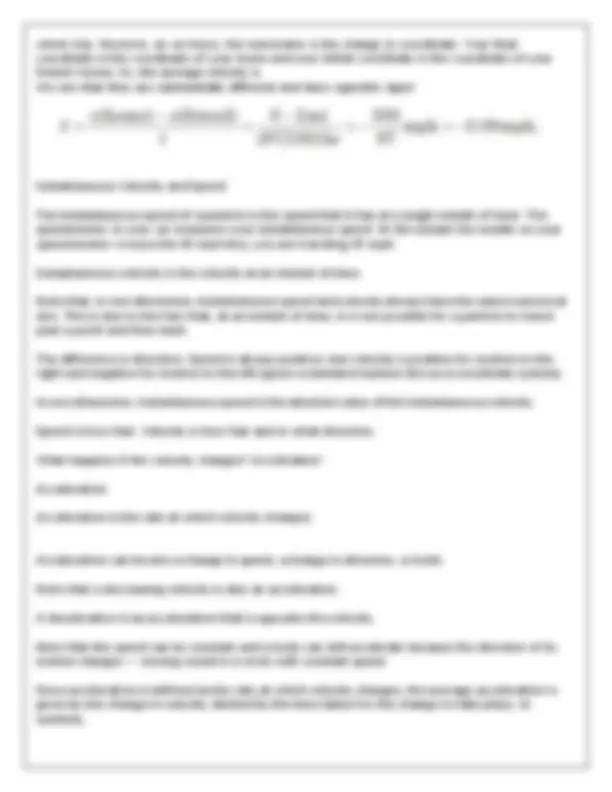
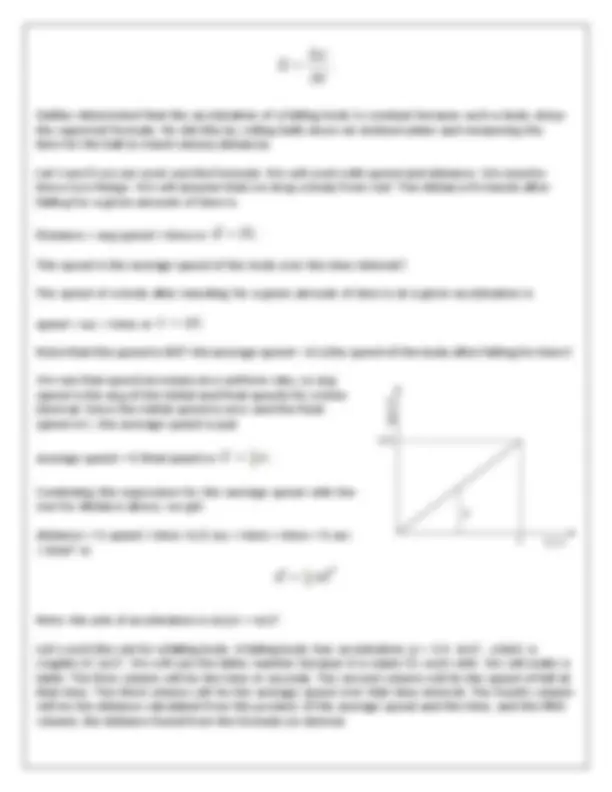
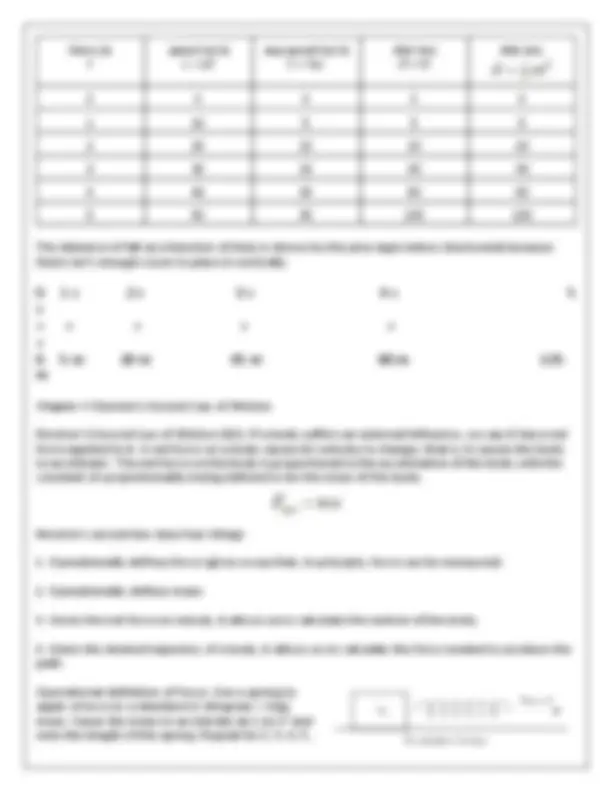
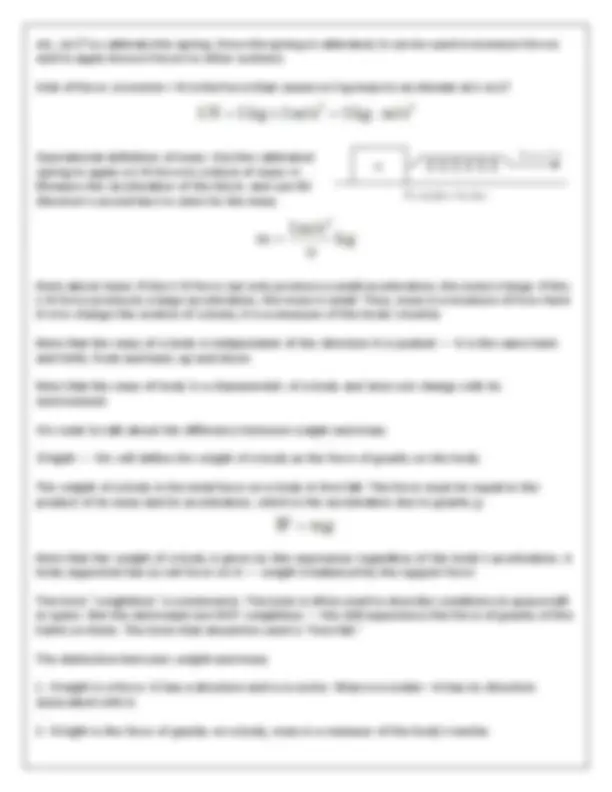
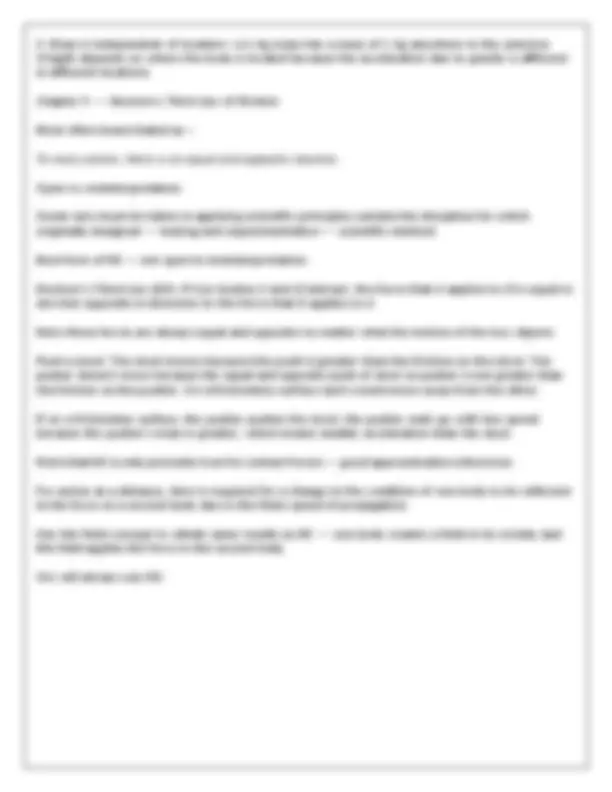


Study with the several resources on Docsity

Earn points by helping other students or get them with a premium plan


Prepare for your exams
Study with the several resources on Docsity

Earn points to download
Earn points by helping other students or get them with a premium plan
Community
Ask the community for help and clear up your study doubts
Discover the best universities in your country according to Docsity users
Free resources
Download our free guides on studying techniques, anxiety management strategies, and thesis advice from Docsity tutors
An in-depth exploration of newton's laws of motion, focusing on the concepts of force, impulse, work, and energy. It covers newton's first and second laws, the relationship between force and torque, and the definition of potential and kinetic energy. The document also discusses the practical applications of these laws, such as calculating the force exerted by a rocket or understanding the concept of lift in an airplane wing.
Typology: Exams
1 / 46

This page cannot be seen from the preview
Don't miss anything!







































What is Physics? Physics attempts to explain the universe and how it works by breaking it into its smallest possible components and, given the interactions among them, deduce how the universe works at all levels. For us for the time being: Physics is the study of motion. How physics (and science) is done. The Scientific Method.
299,792, 458 m/s Unit for Time: second Originally based on the length of the year. Current Standard – atomic clock — so many oscillations of cesium atoms. Chapter 2 — Newton’s First Law of Motion — Inertia Ancient Greeks: Natural state of motion is one of rest. Galileo tested this idea. He applied a given impetus to a block and measured how far it would slide along a horizontal surface. Found that a body given the same impetus would slide different distances before coming to rest depending on how lubricated the surface was. Note: the pendulum below is used to provide the same impetus to the block in each trial. He concluded that a body sliding on a perfectly frictionless surface would slide at constant speed in a straight line forever. Galileo: Natural state of motion is constant speed in a straight line. Why don’t all bodies maintain constant speed in a straight line? Forces! Force: A physical push or pull that can cause the motion (speed and/or direction) of a body to change. Think of pushing or pulling a grocery cart. Note that the word force has some different meanings in everyday life: the bank robber forces the teller to give him money by pointing a gun at her. This is not a physics force. A body without forces applied to it will not change its motion.
between x 2 and x 1. This motion can be described in terms of the average velocity. The average velocity is defined as the ratio of the change in coordinate to the time needed for the change in coordinate to take
formula for the average velocity is The bar above the v symbol means “average.” Note that we don’t know from our snapshots how the particle gets from its initial coordinate to its final coordinate. It could travel past its final coordinate and then come back. Or it could have started moving to the left from its initial coordinate and than turned around and moved to its final coordinate. And its speed might not have been constant during the trip. Important: In physics speed and velocity are NOT the same. Average speed is defined in terms of the total distance traveled — the distance traveled divided by the time to travel the distance. Note that average speed is always positive. Average velocity will be negative if the particle ends up to the left of its starting point.
We will always use N3. Chapter 6 — Momentum Momentum is a measure of how hard it is to bring a moving body to rest. Clearly, momentum must depend on mass since mass is a measure of how hard it is to change the motion of a body. It must also depend on the velocity of a body since faster bodies will be harder to stop. Simplest mathematical description: momentum ( p ) of a body is the product of the mass m of the body and its velocity v :
Examples of Momentum:
Impulse — related to momentum and related to force. Impulse changes momentum.
The forces of interaction obey N3. The forces that the two bodies apply to each other are equal and opposite. This means that the impulses are also equal and opposite—obey N3. Multiply both forces by the same time of contact to get impulses. Suppose in the collision, body 1 increases the momentum of body 2 by a certain amount due to the impulse it applies on body 2. Since the impulse that body 2 applies to body 1 is equal and opposite, it will decrease the momentum of body 1 by the same amount. This means that the sum of the momenta of the two bodies after the collision is the same as the sum of the momenta before the collision. Principle of Conservation of Momentum: If the net external force on a system of particles is zero, the total momentum of the system remains constant. Note that momentum and impulse must have the same units. Unit of impulse is unit of force —
Let’s do an example. Suppose two blocks are on a frictionless surface. The first block, the projectile, is moving toward the second block, the target, which is at rest. Suppose that the two blocks stick together after the collision. We want to find the final velocity of the two blocks. Let’s choose some numbers. Let m 1 = 0.1 kg, m 2 = 0.05 kg, and the initial speed of block 1 be v 1 = 1m/s. The figure above shows the system of blocks before and after the collision. The symbol V is the final velocity of the two blocks, which is what we are trying to find. The momentum before the collision is the sum of the momenta of the two blocks after the collision:
1 1 2 2 1 2
The momentum after the collision is the product of the combined mass of the two blocks and their common final velocity: ( m + m ) V = (0.15 kg) V Setting the initial and final momenta equal and solving for V , we get or Note that we needed to know nothing about the nature of the force between the two blocks except for the fact that it caused the two blocks to stick together. We have solved a problem that would have been extremely difficult, if not impossible, to solve using Newton’s Second Law. Chapter 7 — Energy Get to energy through work — similar to, but different from, everyday meaning of work. Work is defined as a force applied over a distance. (Recall impulse — force over time).Thus, work is the product of a force F on a body and the distance d it moves. In symbols: Differences between everyday work and physics work.
are in the same direction. Along the horizontal portions, the work is zero because the force and displacement are perpendicular. Thus, we get We have shown the total work by gravity on the body moving around this path is zero. We haven’t shown that it is zero around any closed path, but this can be done using mathematical tools beyond the scope of this course.
closed path. Example: Friction — we will take a body around a closed horizontal path that lies on a table top. The path is shown at right. We will calculate the work done by friction around this path and show that it is NOT zero. The total work done by friction is the sum of the works for each section of the rectangular path. That is, Note that each of these contributions to the work is negative because in each case, the displacement is always opposite the direction of the frictional force F fr. We get We have proven that friction is nonconservative because we have found closed path for which the work done by friction is not zero.
speeds of all particles in a body are the same. It is possible for the angular speed of a spinning body to change — called angular acceleration — the rate at which the angular velocity changes. What causes angular velocity to change — what causes angular acceleration? Torque or a moment. Since force causes all change in motion, it must be a part of torque. But the torque produced by a force depends on where the force is applied to the body. Consider a door. The torque produced by a given force is greater the farther the force is applied from the hinge or the axis of rotation. The torque on a body depends on how far the force is applied from the axis of rotation. The moment arm of a force is the distance from the point where the force is applied to the axis of rotation. Where l is the moment arm.
Newton’s 2 nd^ Law for Rotation Recall Newton’s 2 nd^ Law from Chapter 4 Newton’s second law for rotation in analogy: Force causes acceleration; torque causes angular acceleration. For N2 for rotation, replace force with torque and acceleration with angular acc. Mass is a measure of how hard it is to change the motion of a body. It must be replaced with something that is a measure of how hard it is to change the rotational motion of a body — rotational inertia or moment of inertia.
Discussion of Rotational Inertia
Just as the momentum of a system or particles is constant if the net force on the system of particles is zero, the angular momentum of the system of particles is constant if the net torque on the system is zero. Note, though, that the net torque will in general, only be zero about a single point (unless the body is at rest). Thus, angular momentum is only constant about that point. This is the principle of conservation of angular momentum: If the net external torque on a system of particles is zero about an axis, the angular momentum of the system is constant about that axis.
Hang one rubber band vertically on a hook. Find a small household item that could be attached to the rubber band using a paper clip, and use this item as a weight to investigate the stretch of the rubber band. Measure the amount of stretch produced in the rubber band with one, two, and four of these (identical) items suspended from the rubber band. What is the relationship between the number of items and the amount of stretch? How large a stretch would you expect for the same number of items suspended from two rubber bands? What happens to the amount of stretch of the rubber band (with the weights attached) if the weights are also pushed to the side with a pencil? 4.2 Newton’s First Law of Motion: Inertia Define mass and inertia Understand Newton’s first law of motion. Newton’s First Law of Motion A body at rest remains at rest, or, if in motion, remains in motion at a constant velocity unless acted on by a net external force. We can think of this law as preserving the status quo of motion. This law states that these must be a cause (which is a net external force) for there to be any change in velocity (either a change in magnitude or direction). An object sliding across a table or floor slows down due to the net force of friction acting on the object. If friction disappeared, would the object still slow down? The idea of cause and effect is crucial in accurately describing what happens in various situations. The object would not slow down at all if friction were completely eliminated. If we know enough about the friction, we can accurately predict how quickly the object will slow down. Friction is an external force. Mass The property of a body to remain at rest or to remain in motion with constant velocity is called inertia. Newton’s first law is often called the law of inertia. The inertial of an object is measured by its mass. Mass is a measure of the amount of matter in something. Unlike weight, mass does NOT vary with location.
Which has more mass: a kilogram of cotton balls or a kilogram of gold? Solution: They are equal. A kilogram of one substance is equal in mass to a kilogram of another substance. The quantities that might differ between them are volume and density. 4.3 Newton’s Second Law of Motion: Concept of a System Define net force, external force, and system. Understand Newton’s second law of motion. Apply Newton’s second law to determine the weight of an object. A change in motion is equivalent to a change in velocity. A change in velocity means, by definition, that there is an acceleration. Newton’s first law says that a net external force causes a change in motion; thus, a net external force causes acceleration. What do we mean by an external force? An external force acts from outside the system of interest. Only external forces affect the motion of a system, according to Newton’s first laws Different forces exerted on the same mass produce different accelerations. (The internal forces actually cancel.) You must define the boundaries of the system before you can determine which forces are external. (a) The system of interest is the wagon plus the child in it. The two forces exerted by the other children are external forces. The force the child in the wagon exerts to hang onto the wagon is an internal force between elements of the system of interest. The weight W of the system and the support of the ground N are assumed to cancel. The vector f represents the friction action on the wagon, and it acts to the left, opposing the motion of the wagon. (b) All^ of external forces^ acting^ on the^ system add together^ to^ produce^ a^ net^ force,^ F net.
Newton’s Second Law of Motion The acceleration of a system is directly proportional to and in the same direction as the net external force acting on the system, and inversely proportional to its mass. In equation form, Newton’s second law of motion is This is often written in the more familiar form When only the magnitude of force and acceleration are considered, this equation is simply Although these last two equations are really the same, the first gives more insight into what Newton’s second law means. The law is a cause and effect relationship among three quantities that is not simply based on their definitions. The validity of the second law is completely based on experimental verification. Units of Force 1N = 1 kg ∙ m/s^2 = 0.225 lb. Weight and the Gravitation Force When an object is dropped, it accelerates toward the center of Earth. Newton’s second law states that a net force on an object is responsible for its acceleration. If air resistance is negligible, the net force on a falling object is the gravitational force, commonly called its weight w. Weight can be denoted as a vector w because it has a direction; down is, by definition, the direction of gravity, and hence weight is a downward force. The magnitude of weight is denoted as w. Galileo was instrumental in showing that, in the absence of air resistance, all objects fall with the same acceleration g. Using Galileo’s result and Newton’s second law, we can derive an equation for weight.
Consider an object with mass m falling downward toward Earth. It experience only the downward force of gravity, which has magnitude w. Newton’s second law states that the magnitude of the net external force on an object is F net = ma. Since the object experiences only the downward force of gravity,^ F net = w.^ The acceleration of an object due to gravity is g, or a = g. Substituting these into Newton’s second law gives When the net external force on an object is its weight, we say that it is in free-fall. That is, the only force acting on the object is the force of gravity. In the real world, when objects fall downward toward Earth, they are never truly in free-fall because there is always some upward force from the air action on the object. The acceleration due to gravity g varies slightly over the surface of Earth, so that the weight of an object depends on location and is not an intrinsic property of the object. The broadest definition of weight is that the weight of an object is the gravitational force on it from the nearest large body , such as Earth, the Moon, the Sun, and so on. It is important to be aware that weight and mass are very different physical quantities, although they are closely related. Mass is the quantity of matter (how much “stuff”) and does not vary in classical physics. Weight is the gravitational force and DOES vary depending on gravity. EXAMPLE 4.1 What Acceleration Can a Person Produce when Pushing a Lawn Mower? Suppose that the net external force (push minus friction) exerted on a lawn mower is 51 N (about 11 lb) parallel to the ground. The mass of the mower is 24 kg. What is its acceleration? Solution: The magnitude of the acceleration a is. Entering known values gives